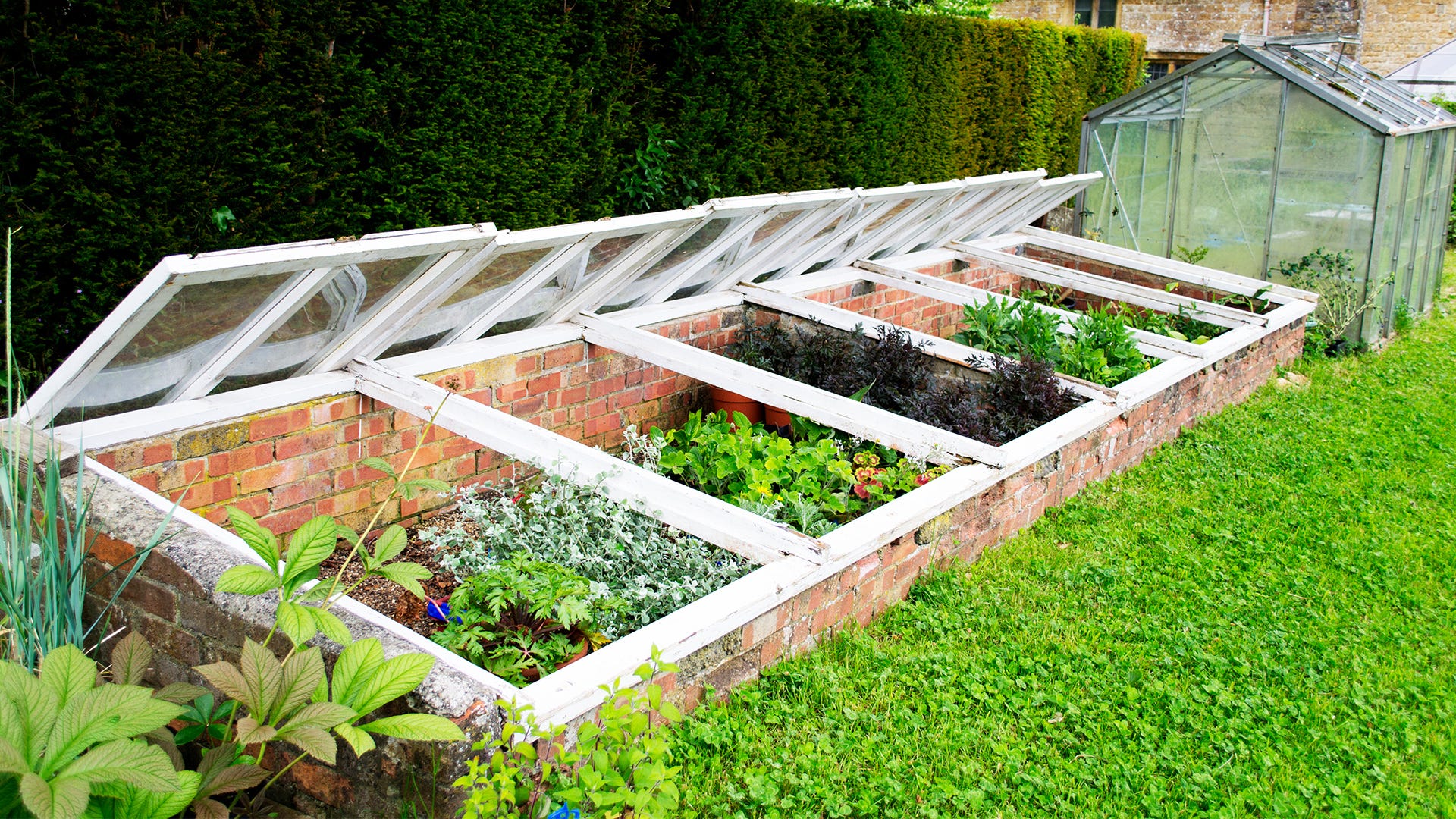
Unless you live where it never freezes, your growing season has a beginning and an end each year. But whether your frost-free period lasts for 90 days or 9 months, you can start gardening earlier and keep going later—no expensive greenhouse necessary. Here are 10 ways to extend your growing season on both ends.
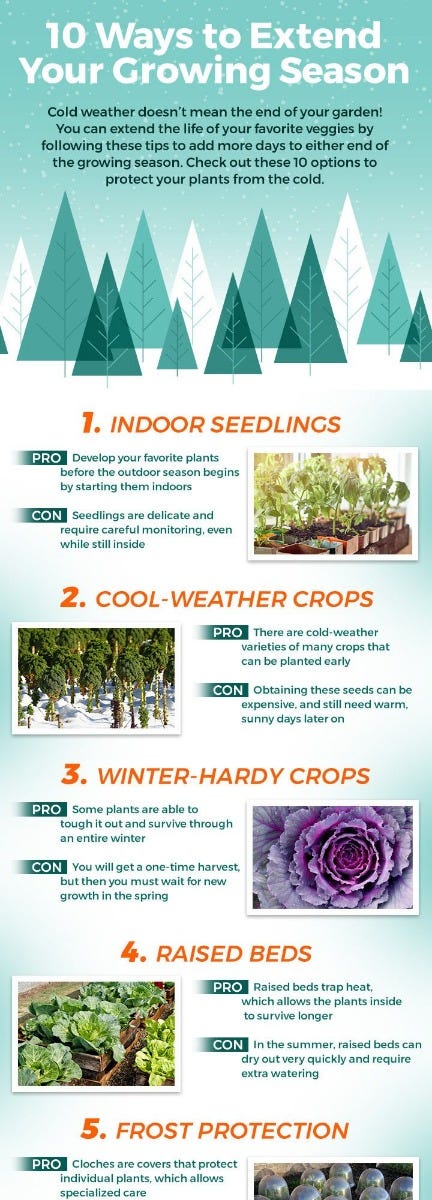
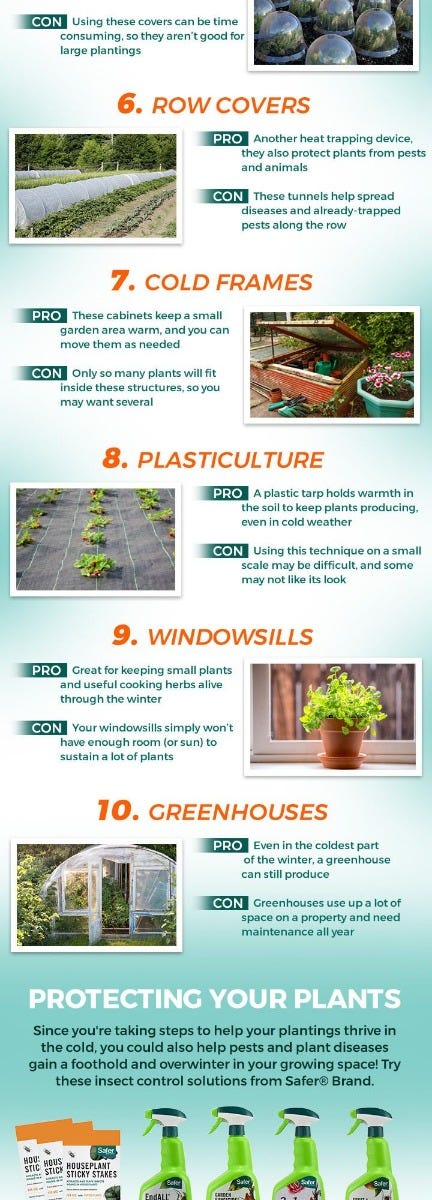

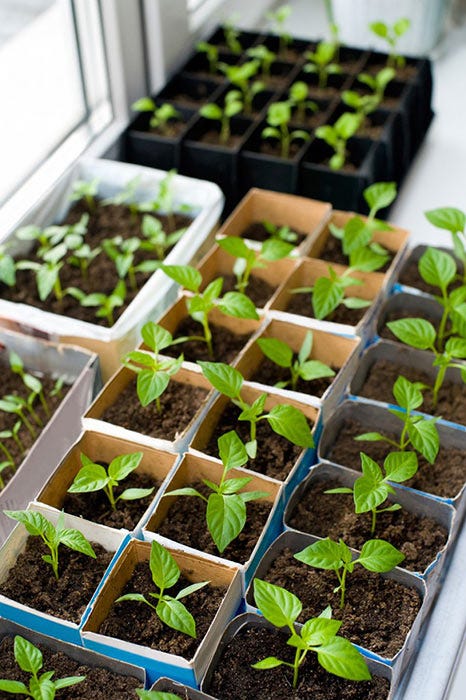 Get more out of your growing season by starting seedlings inside where they are protected from harsh temperatures.
Get more out of your growing season by starting seedlings inside where they are protected from harsh temperatures.- Indoor start. Sowing seeds indoors up to eight weeks before the last frost in your region gives you a jump-start on the season. You don’t need expensive grow lights to start seeds—ordinary fluorescent tubes provide enough light for the seedlings. When you grow your own transplants, they’ll be robust and ready to grow outdoors as soon as your conditions permit.
- Cool-weather choices. As you read descriptions of crops you want to plant, look for varieties that are labeled “early,” such as Early Girl tomato, or “extra cold-hardy,” such as Arcadia broccoli. Cold-tolerant varieties of summer crops such as tomatoes can be planted earlier in spring than other varieties. Hardy varieties of cool-season crops like broccoli can be planted in late summer for a fall harvest.
- Winter hardy. A few crops are tough enough to grow through the winter. Unless you live in the far north, you can sow seeds of spinach, kale, radicchio, and other hardy greens in fall. They sprout up but stop growing when temperatures dip into the 40s. Cover them with a layer of leaves after the soil freezes and uncover them as soon it defrosts for good in spring, when little plants start growing quickly again. Also plant cloves of garlic in the fall—they grow roots over the winter, come up strong in spring, and are ready for harvest in early summer.
- Perennializing peppers. We grow peppers as annuals in North America—when frost comes at the end of the growing season, we pull out the peppers and start again the next year with new plants. In their native, semitropical environment (South America) peppers are perennials that come back year after year. Get a jump on next year’s crop by digging and potting up this year’s plants before the frost. Bring the plants inside, water them only when the soil is dry, and keep them in a bright spot. They won’t grow much, but they’ll survive until you replant them, fully mature and ready to start bearing peppers again, in your garden after the last frost next spring.
- Raising beds. When you build up the soil so that your growing beds are 4 inches or more above the grade, you provide many benefits to your garden, including improved drainage and extra room for roots to spread. Raised beds also extend your growing season because they dry out more quickly and warm up faster in spring than flat beds do, allowing you to plant sooner.
- Homemade cold frame. Using basic, recycled supplies, you can make a cold frame, in which you can grow crops when the temperatures are too low to plant in your garden. All you need is a transparent cover, such as an old window sash, Lexan®, or any other clear material. The sides are a box formed from wooden planks, cinder blocks, or hay bales. To maximize the amount of sunlight your plants get, orient your cold frame toward the south, if possible. Set the plants inside the box and put the cover over them, but be sure to prop the lid open on sunny days when the outside temperature is expected to rise above 40º F. (On a sunny 50º F day, the temperature inside your cold frame can quickly reach 80º F.) Close the lid by late afternoon so some of the insulating heat of the day is trapped inside to help protect against the night’s chill.
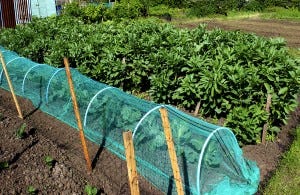 Frost protection. Cloches are covers that you put over individual plants to protect them from frost. They can be as simple as plastic milk jugs with the bottoms cut out or attractive jars like you see in French kitchen gardens. Wall o’ Waters are unique cloches with the extra insulation of water—they’re used by many gardeners to start early tomato crops. Farmers in warm climates protect crops by watering when a frost is predicted—the higher humidity protects plants from the freeze. Cloches or watering can extend your growing time through a few light frosts.
Frost protection. Cloches are covers that you put over individual plants to protect them from frost. They can be as simple as plastic milk jugs with the bottoms cut out or attractive jars like you see in French kitchen gardens. Wall o’ Waters are unique cloches with the extra insulation of water—they’re used by many gardeners to start early tomato crops. Farmers in warm climates protect crops by watering when a frost is predicted—the higher humidity protects plants from the freeze. Cloches or watering can extend your growing time through a few light frosts. - Row coverage. Professional vegetable growers start their spring crops early under low tunnels made with metal hoops that arch over the beds and are cloaked with light agricultural fabric that lets air, moisture, and sunlight through, but keeps frosty air from settling on tender leaves. You can set up low tunnels over your beds or simply spread floating row covers (such as Reemay®) over plants. Tunnels and row covers also work in fall to keep full-grown plants alive and producing.
- Plastic mulch. The best mulches for organic gardens are natural materials that improve the soil as they decompose. Plastic is far from natural and comes from a non-sustainable resource, petroleum. However, clear and black plastic are much more effective at warming the soil than organic mulches, allowing gardeners in northern climates to grow summer crops that need a long season to mature, such as melons, which can be planted only when the soil is above 65º F. Plastic mulch shouldn’t be the first choice of mulch for organic growers, but when trying to extend the growing season for heat-loving crops, it can be useful.
- Windowsill herbs. You can enjoy garden-fresh flavor all year long by growing herbs on a sunny windowsill. Basil, sage, chives, and most other culinary herbs thrive in small pots through the winter, letting you take clippings to use as needed. You can dig up and pot cuttings of herbs growing in your garden or start with fresh ones indoors. Be sure to keep the pots at least a few inches from cold glass to keep the leaf tips from freezing.
Energize Your Growing Season
Do have any additional tips or tricks to extending your growing season? Let’s hear them! Visit Safer® on Facebook and share your ideas! You can get more ideas for protecting your plants by subscribing to the Safer® Brand E-Newsletter, which offers you helpful articles and other announcements about gardening with Safer® Brand.



